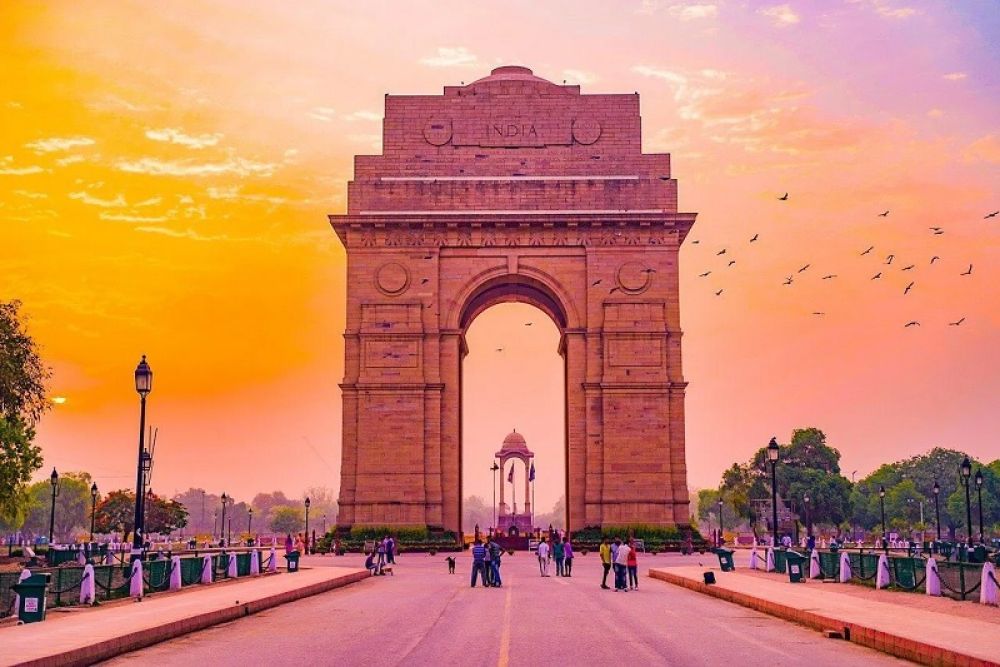

India Gate, an architectural marvel in the heart of New Delhi, stands as a tribute to the bravery of soldiers. Unveiled in 1931, it was designed by Sir Edwin Lutyens to commemorate the Indian soldiers who lost their lives during World War I and the Afghan Wars.
Initially called the All India War Memorial, India Gate bears the names of over 13,000 servicemen inscribed on its surface. It has evolved from a war memorial to a popular tourist attraction, symbolizing both historical remembrance and modern patriotism. Adjacent to the Gate is the Amar Jawan Jyoti, or the Flame of the Immortal Soldier, which was added after the Indo-Pakistan War of 1971 to commemorate the fallen heroes of the Indian Armed Forces.
Over the years, India Gate has emerged as a significant tourist destination in India attracting visitors both domestic and international. The area around India Gate was part of the larger urban development during the British rule. As the city of New Delhi flourished, India Gate became a prominent point of interest for its grandeur and the vast expanse of lawns surrounding it, known as the Rajpath.
Tourists visiting India Gate can enjoy leisurely strolls along the well-maintained lawns, indulge in picnics, or partake in the vibrant atmosphere of street food stalls that line the surrounding areas. It also serves as a focal point for national events such as the Republic Day Parade, which showcases India's military might and cultural diversity, significantly boosting tourist interest every year.
In recent years, with the rise of social media, India Gate has become a popular backdrop for photography enthusiasts and influencers, which has increased its visibility and allure as a must-visit landmark in travel itineraries. The government's initiative to enhance visitor facilities and safety measures around India Gate and incorporating night tourism where the monument is beautifully lit up after dark, has further popularized this historic site.
There has been a conscious effort by the authorities to maintain the integrity of India Gate through various conservation projects. Sustainable tourism practices are encouraged to ensure that the monument and its surroundings remain pristine for future generations. This includes waste management initiatives, controlling the carbon footprint of visitors, and preserving the lush green landscapes that envelope this iconic symbol of India's heritage.
India Gate stands not only as a historical structure but as a testament to the evolving nature of tourism in Delhi. Its ability to adapt to modern demands while preserving its historical sanctity makes it an evergreen attraction for visitors and a beacon of India's rich cultural tapestry.